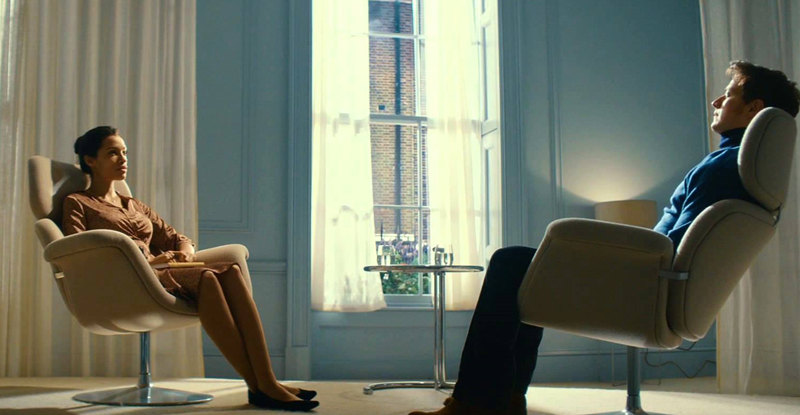Like romantic comedies, time travel novels and push cart hot dogs, it really doesn’t pay to think too much about the contents of supernatural horror films. If you’re going to get anything out of viewing, say, “Paranormal Activity 3” or “House of the Devil,” spending time on logical analysis is both counterproductive and beside the point, like asking about the flavor in the center of a Lifesaver. Not to sound like an apologist for lazy filmmaking, but the suspension of rationality is really the whole reason for being—so why get bent out of shape by asking “why?” when the answer doesn’t matter?
I bring this issue up in reference to Nicholas McCarthy’s supernatural thriller “The Pact.”When the end credits were rolling, I found myself asking a multitude of “why”-type questions. I puzzled over what the ending meant, who was really involved in the final confrontation, what’s the title mean? And then it occurred to me that I had not been asking these questions while the film was rolling, that I had been engaged enough, had bought into the film’s little universe enough, to bypass the need for why. It may not be great art, but that’s as good a definition of a successful film as any other.
McCarthy deliberately leaves the shoelaces untied in many ways on this film, which follows a young woman’s investigation of the strange events at the home where she spent her unhappy childhood. After her abusive mother dies, Annie (Caity Lotz) return home for the funeral to find her sister has disappeared from the house. Unnerving dreams and paranormal events begin to multiply, and she enlists the help of a detective (Casper Van Dien) and a clairvoyant (Haley Hudson, full-on creepy) to explore her mother’s past and its relationship to the spirit which seems to be haunting her world.
McCarthy’s script, expanding on his own short film shot a year earlier, is almost an exercise in verbal minimalism, with long stretches of screen time without dialogue, carried along by Lotz’s physicality and presence, an eerie score by Ronen Landa, and some deliberate, well-judged pacing leading to satisfying jolts of horror. “The Pact” has a distinctive sense of dream-like unreality, rather than relying solely on predictable horror tropes and the merciless visual headbutting so common to the genre. A hotel-room dream sequence mixing high speed and high def photography is particularly effective in mixing visceral shock with the fluid, haunting irrationality Annie experiences.
I was also struck by the use of location shooting, and by the house itself, where much of the action takes place. The set and production design are spot-on in evoking the creepy-kitschy feel of a downtrodden middle class tract home, where secrets and pain have soaked in beneath the florid wallpaper, the cheap veneer and plastic wall clocks.
Some viewers may harp on the pacing, the numerous narrative threads left only partially explained, and a brain-wedgie of a plot development at about the 70 minute mark that sends the movie into unexpected, frankly whacko territory. But McCarthy’s skill with tone and atmosphere makes up for story-telling failings and unanswered questions, and a rolling undercurrent of dread fits in well with the films’ efficient style. And anyway, do you really want all the questions answered? What fun is there in that?
Video:
“The Pact” is presented in 1.85:1 anamorphic widescreen. The disc looks good, with properly moody lighting and picture depth, and a clarity that belies its low-budget technique.
Audio:
The audio track is DTS-HD Master Audio 5.1. There is proper balance, and a nice bottom end showcased in the ominous bass drones of the soundtrack. There are English and Spanish subtitle tracks.
Extras:
- a commentary track with director Nicholas McCarthy, occasionally interesting but also evidence of why McCarthy is behind the camera, not speaking lines in front of it.
- a short but better-than-average making-of documentary “A Haunting in San Pedro”
- theatrical trailer
Parting thoughts:
Nicholas McCarthy’s “The Pact” weaves standard supernatural thriller elements and a well-cast performance by Caity Lotz into a compact, smart package that doesn’t skimp on the scares.


